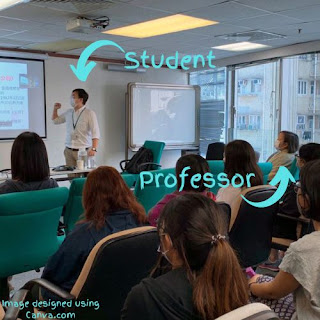Five Factors for Humanizing Online and Distance Learning Classrooms
I am divided about online and distance learning (which I will from here on call “distance learning”). As with all learning opportunities, distance learning has strengths and weaknesses. But it also seems inevitable, so I feel as though it is useless to make a case for or against it. These are my personal thoughts about distance learning classrooms as they (my thoughts) exist in Spring '23.
When I say “distance learning,” I am referring to all organized or directed learning in which the learner and facilitator are not sharing the same space (and often not sharing the same time). I'm teaching three distance courses at the moment, and I have already shared a bit on here about how the design process went. I think that series is called "Real Online Course Design" or something like that.
There is much variability across distance learning setups. On the one side are highly interactive and dynamic virtual classrooms where facilitator and learners meet in real time. On the other side are highly routinized learning modules with no flexibility, which students have to complete.
After diagramming the facilitator – learner interaction continuum, I realized that I am defining interaction as a reciprocal event. That is, the higher the interaction rating, the more that both parties are involved. This continuum applies equally to face-to-face courses, where courses can be very one-sided (where the facilitator dictates all course expectations) or they can be democratic (where students participate equally with the instructor in course design).
I also realize that there are many factors that go into the ideal sort of distance learning course I am imagining. They might be as follows:
· Empathy: The degree to which the facilitator communicates to learners that the facilitator understands, hears, and notices the learner.
o Low: no effort is made to communicate empathy
o Medium: Effort is occasionally made to communicate empathy
o High: All interactions are marked by efforts to communicate empathy
· Autonomy Support: The degree to which the facilitator supports learners’ psychological needs.
o Low: Instructor is controlling
o Medium: Aspects of the course are occasionally autonomy supportive
o High: All aspects of the course are autonomy supportive
· Interaction: Degree to which learners and facilitator collaborate during the course. Modeled in Figure 1, above.
· Structure: Degree to which course requirements and expectations are clarified and followed.
o Low: highly chaotic or laissez-faire. Little to no structure or follow-through from facilitator
o Medium: Some structure is present, and policies/schedule are mostly followed
o High: Structure is present and clear to everybody. Schedule and course policies are followed carefully.
· Facilitator Congruence: Degree to which the facilitator reveals themselves to learners. This is not to be confused with self-exposure, which would be exemplified by using the classroom as a digital journal for secret thoughts. No, congruence refers to the degree to which the facilitator can be themselves in all aspects of course design and facilitation. When they like something, admitting this personal affinity. When they are worried about something, then admitting this concern. A congruent facilitator would not use discussion boards because discussion boards are supposedly useful. A congruent facilitator may, however, consider using discussion boards if their students made this request.
o Low: Facilitator hides their personality behind the professor role.
o Medium: Facilitator makes some effort to reveal themselves to learners; is honest and candid about some feelings, beliefs, and opinions.
o High: Facilitator is honest and candid in all interactions, provided that doing so does not interfere with the development and self-expression and learning of learners.
I think that is it.
These factors can be present or absent in face-to-face courses as well. I believe that there is a learning curve to including these factors in either setting. I sometimes feel just as powerless to promote empathy in a face-to-face course with 100% attendance as I do in an online course where I never see any of my learners’ faces.
The only thing that cannot be replicated in distance learning classrooms—at least not in distance classrooms that are also asynchronous—is the face and body of the other. Learners (and facilitators) are not bodily present in asynchronous courses. Pictures and videos can be shared, but what is missing is the dynamic nonverbal interactions that occur only when sharing physical space (or while visible in shared time). It is easy to make believe that there are no such interactions. That learners and facilitators coexist as disembodied intellects. Therefore it is easier for learners and facilitators to participate in distance learning courses by way of a façade.
This makes facilitator congruence (where the instructor reveals themselves to learners) and empathy (where the facilitator seeks to understand the world of each learner) extremely important in the distance learning environment. I feel that extra time must be spent looking for and mining opportunities to achieve both of these factors, but I'm not sure what this would look like or how this could best be accomplished. I will continue to think about this.



Comments
Post a Comment